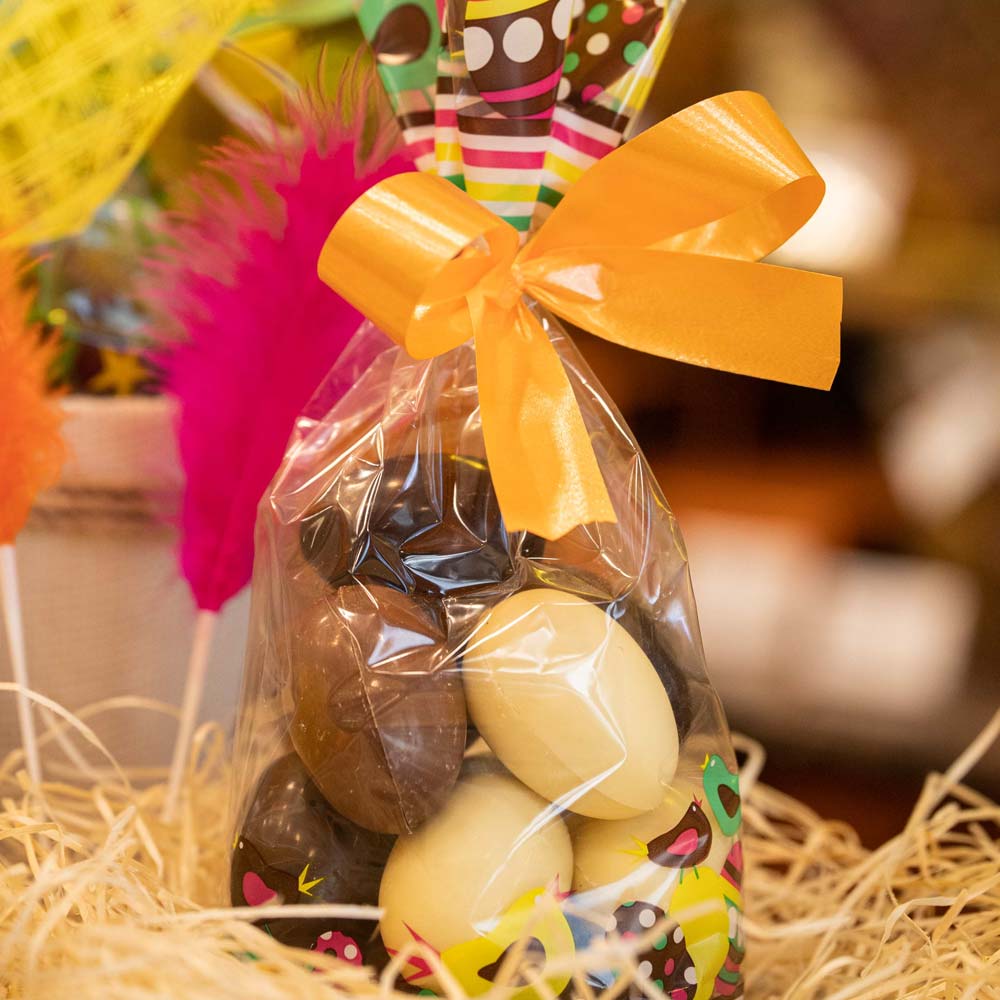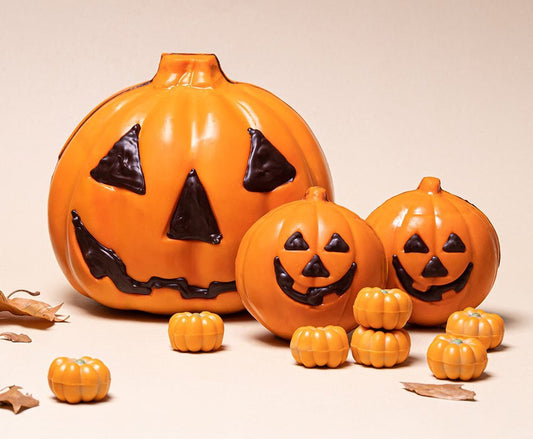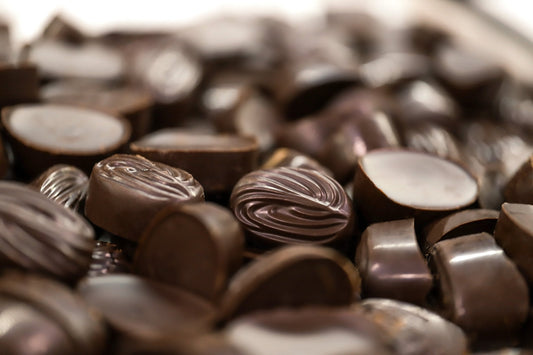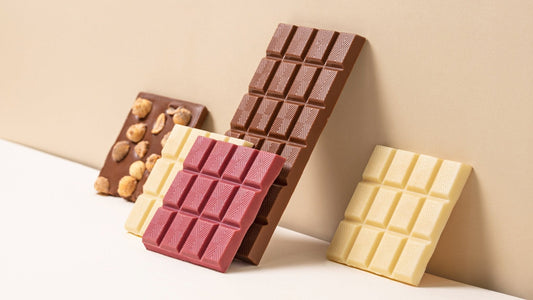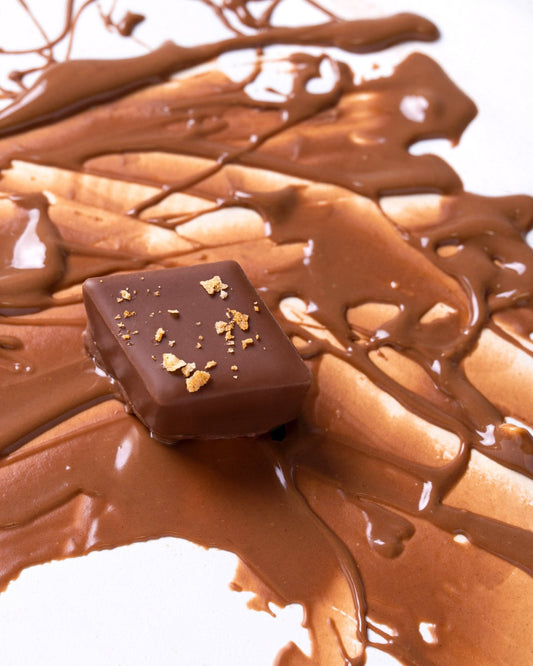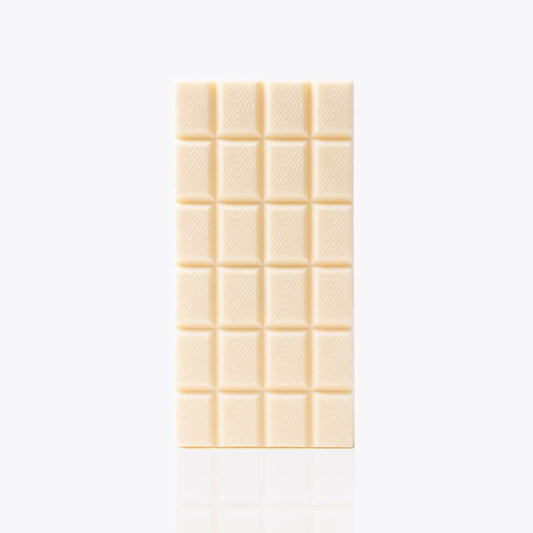How to make chocolate Easter eggs
Alex ZapataEaster is much more than just a date marked on the calendar, it is an opportunity to get together with our loved ones and surprise them with unique details. At Bombonería Pons , we have been perfecting the art of artisanal chocolate for more than five decades, so today we want to share with you a complete guide on how to make Easter eggs, an activity that combines tradition, creativity and that homemade touch that never goes out of style.
Remember that you can always take a look at our collection of small Easter eggs or our specialties, decorated eggs , ideal for the most demanding palates.
Ingredients to prepare Easter Eggs
- — 300 g of Chocolate to melt
- — Easter egg molds
- — Cotton with alcohol
- — Filling for the egg
How to prepare Easter Eggs
1. Preparing the molds:
— Use a cotton pad soaked in fine alcohol to clean the molds and remove any dirt or residue.
— Make sure the molds are completely dry before you begin.
2. Melt the chocolate and prepare it:
— Chop the chocolate into small pieces.
— Melt the chocolate in a bain-marie or use the microwave
In a bain-marie:
— Fill a pot with about 500 ml of water and bring it to a boil.
— Place another pot or smaller bowl on top with the chocolate. Stir the chocolate until it is completely melted.
In the microwave:
— Set the microwave to 700 W and heat in 30-second intervals, stirring each time until the chocolate is completely melted.
If you're having trouble melting chocolate when making your Easter eggs, don't worry. Sometimes chocolate can burn, become lumpy, or harden too quickly. To avoid these problems and achieve perfectly melted chocolate, head here .


3. Mold the Easter eggs:
— Pour a little of the melted chocolate over the mold.
— Move the mold so that the chocolate covers the entire interior surface.
— Turn the mold over to remove excess chocolate and let it dry until the chocolate becomes opaque.
— Repeat this process one more time to give it more thickness, especially at the edges.


4. Unmold the eggs and fill them:
— Carefully unmold the egg halves onto a clean counter.
— Put the surprises, sweets or chocolates you want inside one of the lids.


5. Join the halves:
— Heat a flat plate and quickly run one of the egg halves around the edge, just enough to melt the chocolate slightly.
— Place the two halves together and press gently until they stick together.
— Let the egg sit until the joint is completely solidified.


6. Decorate the Easter Eggs (optional):
— Use the same melted chocolate inside a paper cone to make decorations or paint it with edible paint.
And so you will have some delicious Easter eggs perfect to enjoy or give as a gift!
Common mistakes when making Easter eggs and how to avoid them
Making Easter eggs at home can be a fun and creative experience, but as with any craft activity, unexpected challenges arise. If you find yourself with opaque chocolate or chocolate with white spots, it's likely that you didn't respect the proper temperatures during the process.
When working with moulds, another common problem is that the eggs do not come out easily. To avoid this, make sure that the chocolate is completely solidified and the moulds are clean before using them. Remember to remove them carefully to avoid breaking them. If you prefer to avoid these inconveniences, you can explore our selection of decorated eggs , handcrafted with the utmost detail.
Frequently Asked Questions About Making Easter Eggs
Which chocolate is best for making Easter eggs?
The ideal chocolate is one with a high cocoa content and without additives such as hydrogenated vegetable fats. If you are looking for a chocolate that guarantees exceptional results, opt for coating options with 60-70% cocoa. If you prefer a quicker solution, discover our range of ready-made and deliciously decorated Easter eggs .
How to decorate Easter eggs for children?
Decorating Easter eggs is a fun activity that kids love. For them, you can use white chocolate colored with natural dyes, as well as candies, edible pearls or even small drawings made with icing. Don't have time to do it at home? Explore our collection of small Easter eggs , ideal for giving as a gift or sharing with the family.
Can I make Easter eggs without molds?
Of course! Although moulds are useful for obtaining perfect shapes, it is possible to make Easter eggs without them. A simple technique is to use small inflated balloons as a base, covering them with layers of melted chocolate and letting them solidify before removing the balloon. However, if you are looking for the precision and delicacy of handmade products, our Easter cakes and eggs are a safe bet for this holiday season.
What tips can improve the result?
Some of our top tips include:
— Use clean, dry instruments to prevent the chocolate from deteriorating.
— Decorate with chocolate transfers or sprinkles for a professional touch.
— If you are a beginner, try simple molds before moving on to more complex designs.
